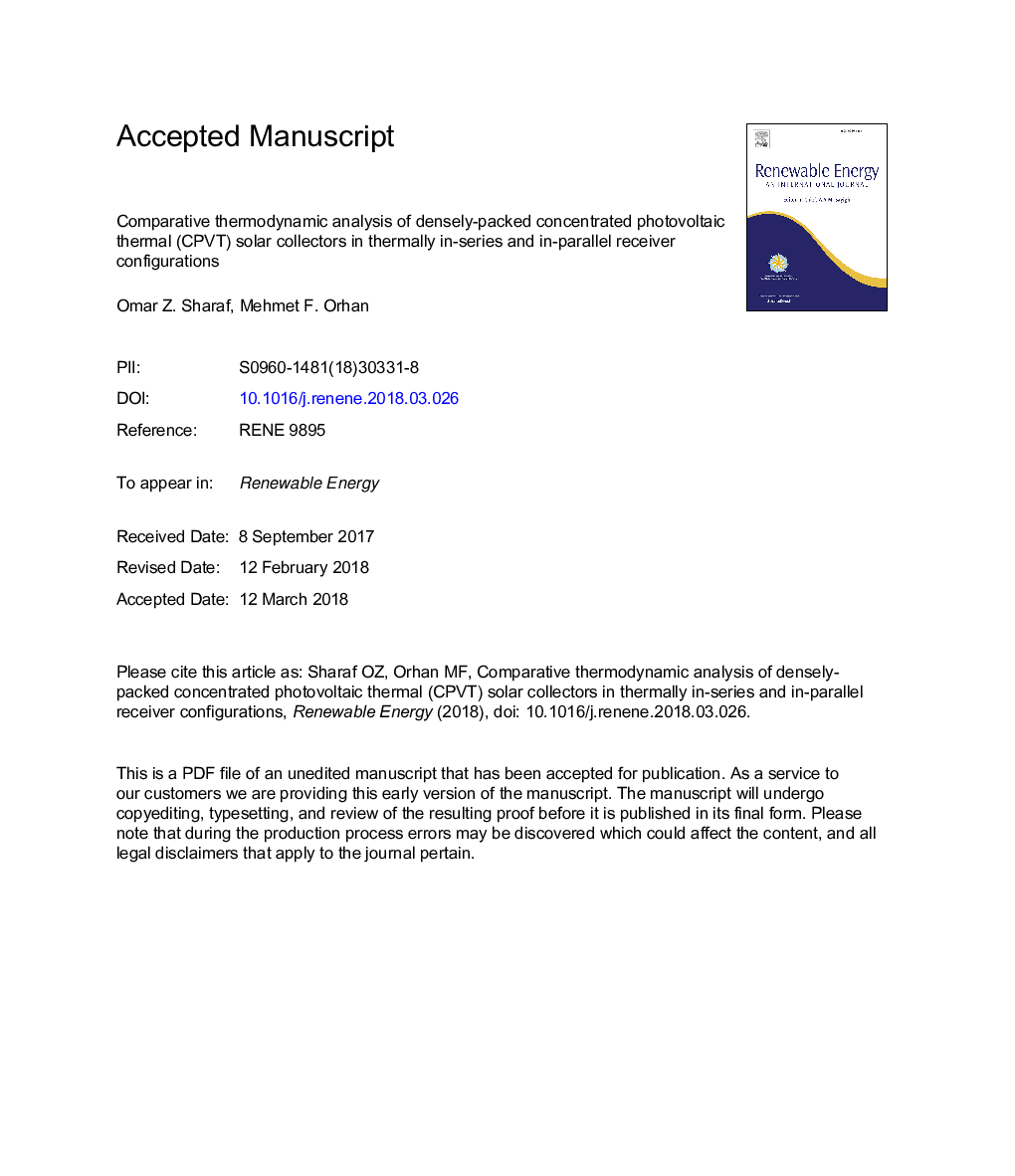| کد مقاله | کد نشریه | سال انتشار | مقاله انگلیسی | نسخه تمام متن |
|---|---|---|---|---|
| 6764244 | 1431578 | 2018 | 81 صفحه PDF | دانلود رایگان |
عنوان انگلیسی مقاله ISI
Comparative thermodynamic analysis of densely-packed concentrated photovoltaic thermal (CPVT) solar collectors in thermally in-series and in-parallel receiver configurations
دانلود مقاله + سفارش ترجمه
دانلود مقاله ISI انگلیسی
رایگان برای ایرانیان
کلمات کلیدی
موضوعات مرتبط
مهندسی و علوم پایه
مهندسی انرژی
انرژی های تجدید پذیر، توسعه پایدار و محیط زیست
پیش نمایش صفحه اول مقاله

چکیده انگلیسی
In this study, two densely-packed concentrated photovoltaic thermal (CPVT) solar collector configurations are optically and thermodynamically designed and analyzed and then exergoeconomically and environmentally assessed and compared. The designs are composed of parabolic dish concentrators, multi-junction photovoltaic (MJPV) cells, segmented thermoelectric generator (sTEG) couples with interconnectors, and finned minichannel heat extractors (mHXs). In configuration I, the receiver assembly components are connected thermally in-series whereas in configuration II they are connected thermally in-parallel. Geometric relations are employed to size the concentrator with design evaluations taking place with the aid of ray trace simulations. To better homogenize the reflected flux, the receiver is slightly shifted from the effective focal plane of the concentrator. Optical analysis reveals that the dish reflector is very sensitive to incidence angle deviations. It is found that the thermally in-series configuration offers an average annual exergy efficiency of 29.1% compared to 19.3% for the thermally in-parallel configuration. Both configurations offer comparable average annual energy efficiencies with a slight environmental and exergoeconomic advantage towards the thermally in-parallel configuration. The thermally in-series configuration is shown to provide a higher economic and thermodynamic value when electrical output is given preference over thermal output. The thermally in-parallel configuration, on the other hand, is favored in applications where thermal energy streams at multiple outlet temperatures are simultaneously desired, including a high-temperature thermal output. From an environmental viewpoint, both configurations are found capable of displacing a considerable amount of primary energy and CO2-equivalent emissions. While from an exergoeconomic viewpoint, for a system lifetime of 25 years, it is shown that the investment cost needs to be brought to approximately 21,000 AED for the proposed CPVT units to yield a positive lifecycle net present value (LCNPV). The annual escalation rate of electricity is observed to have a significant effect on the LCNPV of the collectors. Both environmental and exergoeconomic performance indices are shown to be sensitive to the thermal energy application meant for the CPVT collectors. Exergy analysis reveals that a drop in electrical exergy is offset by a rise in thermal exergy when higher system operation temperatures are used. The performance of both designs is simulated and compared on a monthly basis using weather data of Abu Dhabi, UAE.
ناشر
Database: Elsevier - ScienceDirect (ساینس دایرکت)
Journal: Renewable Energy - Volume 126, October 2018, Pages 296-321
Journal: Renewable Energy - Volume 126, October 2018, Pages 296-321
نویسندگان
Omar Z. Sharaf, Mehmet F. Orhan,